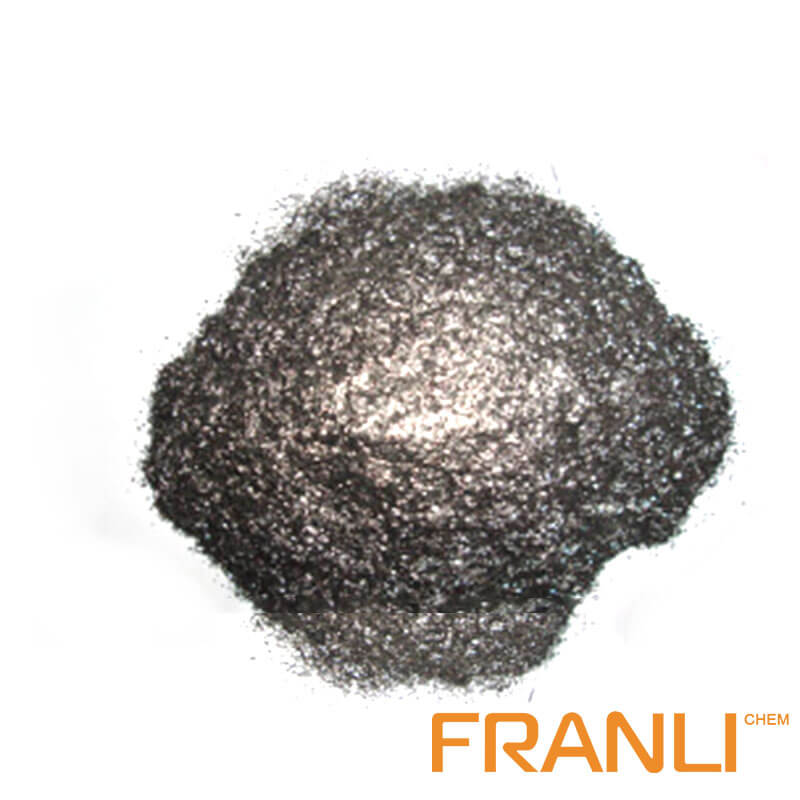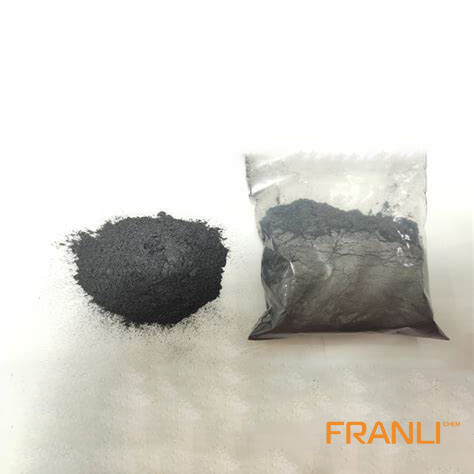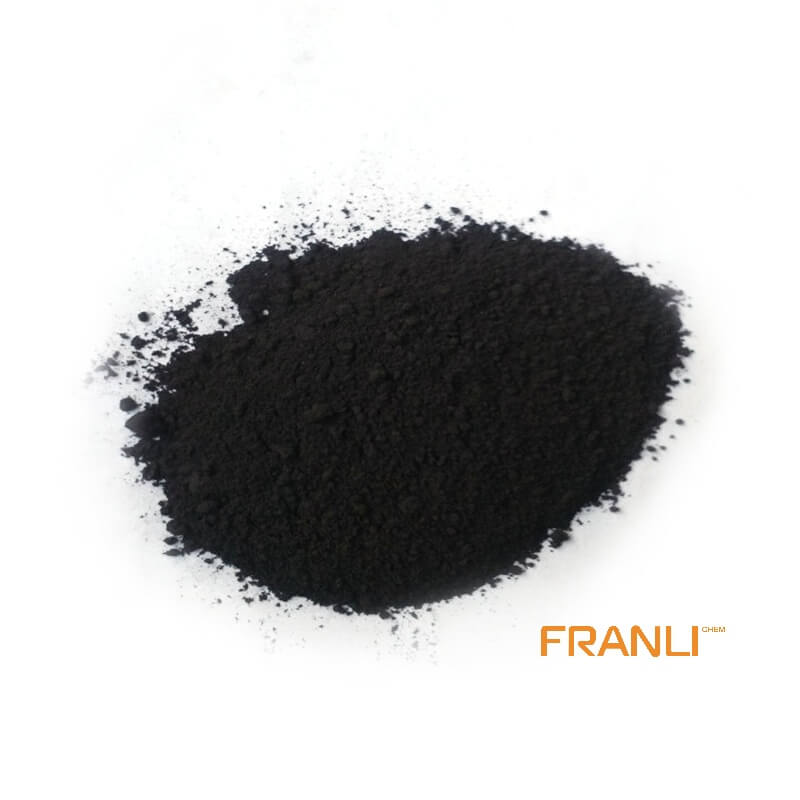



Flake Graphite
Size
0.01mm
Carbon Content
99%min
Package
25kg small bags into ton bags
Origin
China
Features
thermal shock resistance, lubricity, conductivity and plasticity…
Application
Lead battery plates positive and negative conductive agent, lithium batteries nickel hydrogen etc
Natural flake graphite has superior physical and chemical properties and is widely used in metallurgy, coatings and refractory industries. It is an important non-metallic raw material that is indispensable for today’s high-tech. Flake graphite is divided into large flake graphite and fine flake graphite according to the size of its scales. Usually, large flakes refer to +32 mesh, +50 mesh, +80 mesh, and +100 mesh flake graphite.
Request a quote
Type A graphite is flake graphite with uniform and non-directional distribution. This is the most common form of graphite distribution in common gray cast iron. Type A graphite is generally considered to be most beneficial to performance.
A-type graphite is formed when the graphite nucleation ability of cast iron is strong, the cooling rate is low, and eutectic transformation occurs under low supercooling conditions. It requires that the raw iron liquid has sufficient carbon equivalent, sulfur content and proper inoculation. Casting is the easiest type of graphite to form in the shortest possible time after hatching without cooling or with too little wall thickness. At this time, if the ratio of finished carbon equivalent to 4.26% is equal to or approximately equal to 0.9, the best graphite morphology is obtained.
B-type graphite is chrysanthemum-shaped graphite, which is uniformly distributed and has no direction. In the early stage of solidification, the degree of supercooling is large, and the nucleation conditions are poor, and it is formed when the degree of supercooling decreases in the later stage. This kind of graphite is distributed in clusters, with smaller graphite sheets in the center, thicker graphite sheets on the edges, and a clear chrysanthemum shape. When graphite aggregates, concentrated weak points form on the substrate. Compared with type A graphite, the strength is reduced.

The nucleation conditions of type B graphite are worse than that of type A graphite, and the degree of supercooling during eutectic transformation is also greater than that of type A graphite. During crystallization, supercooled graphite (type D) is first generated in the center of the eutectic cluster, and the heat of crystallization reduces the surrounding supercooling to form Type A graphite, resulting in chrysanthemum-shaped flake graphite.
Type C graphite is sheet-like primary graphite with uniform and non-directional distribution, which is formed by gray cast iron with hypereutectic composition during slow cooling. Its characteristic is that there is very thick needle-like graphite distributed in type A graphite. This structure is the most destructive to the matrix, so the performance is also the worst.
Type C graphite is mainly found in cast iron with a high carbon equivalent (hypereutectic composition) and slow cooling. When the hypereutectic liquid iron is cooled, after passing through the liquidus, the primary graphite is precipitated under a certain degree of supercooling, and it gradually grows up in the liquid phase. Due to the higher crystallization temperature, the growth time of the graphite flakes is longer, resulting in the formation of coarse flake graphite with fewer branches. When the temperature is lowered to the eutectic temperature, a normal eutectic transformation occurs. The graphite produced at this time is normal eutectic graphite (that is, type A graphite). The final result is that there is a normal eutectic distribution between the coarse graphite flakes. Crystalline graphite. Therefore, type C graphite is composed of coarse, massive graphite and type A graphite. In addition, although the carbon equivalent is not too high, this kind of graphite is also produced when the pouring temperature is high, the cooling rate is slow, and the incubation is excessive.
Type D graphite is interdendritic graphite with no directional distribution. This kind of graphite is very fine and disorderly distributed among the dendrites. In recent years, new research has proposed that D-type graphite cast iron has unique applications in certain fields, and further research is needed.
Type D graphite is a cast iron with a low carbon equivalent and high cooling rate. It is formed between the austenite dendrites under the conditions of large undercooling and developed primary austenite dendrites. The graphite flakes are small and non-directional. Sex. Type D graphite is commonly found in thin-walled gray cast irons with low carbon equivalent, and is also called “supercooled graphite” or “interdendritic graphite”.

E-type graphite is interdendritic graphite with directional distribution, which is formed under the condition of lower carbon equivalent but slower cooling rate. Due to the strong directionality of the graphite arrangement, under the action of a small external force, the castings may be brittle and fractured in a band along the direction of the E-type graphite arrangement, and the strength is poor.
E-type graphite is formed under the conditions of low carbon equivalent and low cooling rate. Due to a large number of primary austenite dendrites, low undercooling during eutectic transformation, not too many graphite cores, and large eutectic clusters, graphite flakes formed are larger than D-type graphite. Due to the slow cooling, the austenite dendrites are developed. When the eutectic transformation occurs, the liquid phase is mainly between the primary austenite dendrites, and the formed graphite flakes grow along the direction of the dendrites and have a certain directionality. For cast iron with E-type graphite, D-type graphite will also be formed if the cooling rate is higher.
F-type graphite is a large piece of graphite distributed with much small A-type graphite, also known as star-shaped graphite, which is formed under the condition of hypereutectic composition but rapid cooling. The function of type F graphite is similar to that of type C graphite.
F-type graphite is hypereutectic graphite formed by high-carbon molten iron under relatively high supercooling conditions. It is similar to C-type graphite in terms of composition conditions. Its characteristic is that many small graphite flakes are distributed on the bulk graphite (also called star graphite). Bulk graphite can be considered to be equivalent to virgin graphite in type C graphite, and small flake graphite grows on it.



